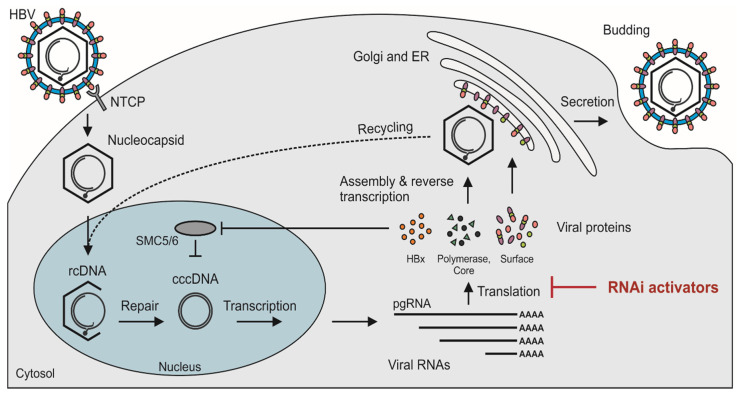Figure 1.
Disruption of the hepatitis B virus (HBV) replication cycle by RNA interference (RNAi) activators. HBV enters hepatocytes through a specific interaction with the sodium taurocholate co-transporting polypeptide (NTCP) receptor and the nucleocapsid is transported to the nucleus. Relaxed circular DNA (rcDNA) is then released and “repaired” to form covalently closed circular DNA (cccDNA). This stable intermediate is transcribed to produce viral RNAs, including pregenomic RNA (pgRNA), which are exported to the cytoplasm and translated. Encapsidation of the pgRNA, together with a viral polymerase, by the core proteins signals its conversion to rcDNA, thereby yielding a mature nucleocapsid. The nucleocapsids may then be recycled to replenish cccDNA in the nucleus (dashed line) or trafficked through the Golgi endoplasmic reticulum (ER), thereby acquiring surface antigen-embedded membranes, and then being secreted from the cell as a new infectious virions. The protein coded by the viral X open reading frame, HBx, targets the cellular SMC5/6 (structural maintenance of chromosomes) complex for degradation and thereby enables transcription from cccDNA. RNAi activators function to degrade target RNAs, thus preventing the translation of viral transcripts and inhibiting HBV replication. RNAi activators tested successfully against HBV include short interfering RNAs (siRNAs), short hairpin RNAs (shRNAs), and artificial primary microRNAs (pri-miRNAs).

